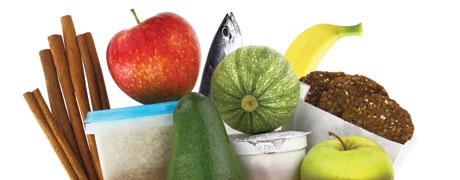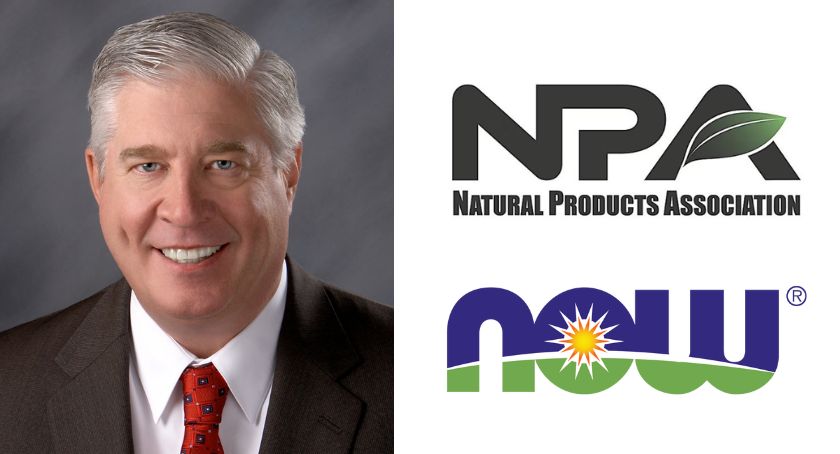Features
Flourishing Flora: Probiotics & Prebiotics Market Update
Emerging science and broadened consumer awareness propel the probiotic and prebiotic categories to mainstream status.
By: Lisa Olivo

The critical role of beneficial bacteria in supporting overall well-being has reached a tipping point. Meanwhile, mapping of the human genome has led to better understanding of how microorganisms function to maintain a healthy gut flora. When ingested in adequate amounts, probiotics confer a health benefit to their host, and favorably alter the body’s bacterial composition to improve intestinal function, decrease inflammation, enhance nutrient absorption and encourage overall wellness.
Feeding and assisting the growth of these helpful “bugs” are prebiotics, which are non-digestible fibers. With specific kinds supporting the proliferation of various probiotic strains, prebiotics are also associated with a comprehensive range of health benefits and supplemental uses.
Consumer Understanding & Market Growth
Touching on a wide variety of medical issues, awareness of prebiotics and probiotics is growing, reaching new audiences internationally. As the general public better understands the benefits of good bacteria, experts believe sales of probiotic and prebiotic supplements, functional foods and beverages will continue to climb.
“Many consumers (more than 80%) are aware of probiotics and their depth of knowledge has been increasing related to more media coverage,” said Connie Falkenstein, brand manager for UAS LifeSciences, Wausau, WI.
The probiotic supplement market continues to grow in the U.S. and abroad, according to Transparency Market Research, which reported the global probiotics market was worth $27.9 billion in 2011 and is expected to reach $44.9 billion in 2018, growing at a CAGR of 6.8% from 2013 to 2018.
This forecast comes as no surprise to Mike Bush, senior vice president, Ganeden Biotech, Mayfield Heights, OH. “The probiotic market is growing immensely, with no indication that it will be slowing down anytime soon; by 2015 the market is expected to reach $31.1 billion globally, with about 90% of that from the sale of functional foods and beverages.” He also stressed that the vast majority of consumers know what probiotics are and associate them with a health benefit.
Jamie Spell, managing director of Nutraceuticals International Group, Bloomingdale, NJ, noted that safe and efficient products help boost consumer awareness and usage. “Growing attention is now referred to high value finished products, providing benefits beyond the normal nutritive value. Probiotics are becoming the mainstream ingredient to be included in food applications.”
Greater understanding of probiotics is in turn leading to increased acceptance and knowledge of the benefits of prebiotics.
President and CEO of BENEO, Inc., Morris Plains, NJ, Joe O’Neill, has observed that “consumers often don’t distinguish between pro- and prebiotics, and prebiotics often benefit from the awareness of probiotics.” According to BENEO’s consumer research, prebiotics are relatively well known in countries such as Mexico, Russia and Thailand, he added.
The European market is also keenly aware of the power of prebiotics, according to Joseph Evans, PhD, executive manager, research and development for Stratum Nutrition, St. Charles, MO. He cited a recent report from Transparency Market Research that found the European prebiotic market continued to thrive despite the recent regional economic downturn. The report predicted European prebiotic demand would reach $1.9 billion in 2018.
Dr. Evans also noted that Asia-Pacific is another key market where prebiotics are expected to flourish in the coming years. Asian demand for prebiotic ingredients is anticiapted to grow at a CAGR of more than 11% from 2012 to 2018. Transparency Market Research’s prebiotic ingredients report valued the market at $2.3 billion in 2012 and estimated it will reach $4.5 billion in 2018, growing at a CAGR of 11.4% between 2012 and 2018.
Concurrently, more products sporting prebiotic claims are making their way to the market. Neelesh Varde, PhD, senior product manager with Roquette America, Geneva, IL, referred to statistics from Mintel’s Global New Products Database, which found “the number of new products launched with prebiotic claims more than tripled from 2009 to 2013.” This increase in prebiotic product offerings “speaks to the fact that consumers are looking for more nutrition-added products and that manufacturers are looking to meet these needs,” he said.
Despite heightened awareness and considerable growth potential, Mathieu Dondain, director of marketing and communication with France-based Nexira, noted “it is important to continually highlight all the health benefits of prebiotics; their role in supporting good bacteria, but also digestive health and comfort, prevention of chronic disease, immunity and general well-being.”
Probiotic Strains
There is a diverse and growing selection of probiotic strains available to manufacturers and consumers, each impacting different aspects of human health, noted Shaheen Majeed, marketing director, Sabinsa Corporation, East Windsor, NJ. “There is no ‘one size fits all’ concept in the probiotics category. Each probiotic has its own benefits which are inherent to its strain.”
“Lactobacilli (lactic acid bacteria) and Bifidobacteria are the most common types of microbes used as probiotics,” commented Ms. Spell of Nutraceuticals International Group. “The most well-known probiotics include L. acidophilus (LA 14 – ATCC SD 5212), L. rhamnosus GG (ATCC 53103), B. lactis BB 12 (DSM 15954) and L. reuteri (ATCC 55730).”
Companies like Ganeden Biotech are investing in research targeting strain specificity. “In the past, companies would use data from similar strains to support claims,” Mr. Bush explained. “In reality, different strains within the same species can have very different effects when consumed. For this reason the industry and regulators have been shifting to require data on each individual strain to demonstrate safety and efficacy.” Ganeden’s proprietary strain GanedenBC30 (Bacillus coagulans GBI-30, 6086) is a spore-forming probiotic that specifically targets digestive and immune support. A key benefit of this strain is its ability to survive manufacturing processes, shelf life, stomach acids and intestinal bile as a result of its “naturally occurring layer of organic material (spore) that protects the genetic core of the bacteria,” according to Mr. Bush.
The probiotic supplement Immuno-LP20 from Japan-based House Wellness Food consists of 20% HK L-137, a heat-treated L. plantarum strain. Yoshitaka Hirose, manager of the company’s Research and Development Institute noted that, “L-137 has been proven to boost T helper 1-type immune responses, and supports anti-influenza and anti-allergenic effects.” As a result, the company has positioned its ingredient as an “immunobiotic” to better indicate its strength in specifically aiding immune function.
Generally, demand for specific organisms falls in line with the most compelling research, according to Tim Gamble, president and CEO of Nutraceutix, Redmond, WA. However, “consumer awareness of Acidophilus and those organisms highlighted by inclusion in the heavily marketed yogurts and global brands always factors into new formulations.”
He said the company has seen increased demand for most of the strains it produces, including those suitable for upper and lower intestinal delivery, and lately those associated with oral health. “For us, the key is proper delivery of viable organisms, no matter what the species or strain, to the part of the body where they are most likely to provide some kind of benefit.”
Prebiotic Ingredients
Varying in origin and application, prebiotics are derived from multiple sources, with different ingredients appealing to different strains of probiotics. Key prebiotic ingredients include inulin, fructo-oligosaccharides (FOS), mannan-oligosaccharides (MOS) and galacto-oligosaccharides (GOS). Leading the pack among prebiotics, inulin accounted for 40% of the overall prebiotic market in 2011, according to Transparency Market Research. However, the market research firm predicted MOS ingredients would be the fastest expanding prebiotic, growing at a CAGR of 10.3% between 2012 and 2018.
Commenting on the application of particular prebiotic ingredients, Dr. John Deaton, vice president of technology for Deerland Enzymes, Kennesaw, GA, said, “There are some fibers/carbohydrates that can increase certain types of probiotics, but not others.”
Depending on the specific prebiotic, the effective daily dose can vary greatly—with recommendations ranging from 5 to 40 grams per day, he said. High doses of fiber-based prebiotics can result in gas or bloating, with probiotic growth often taking weeks or months to become well established. “With these drawbacks in mind, Deerland Enzymes’ research and development team recently developed a unique prebiotic that is not fiber- or starch-based, and is highly effective in small doses (15 mg) within hours. This patent-pending product, called PreforPro, is backed by both in vitro and in vivo studies. Additional benefits of PreforPro include its efficacy on a broad spectrum of different probiotic strains.”
Dr. Deaton predicted further expansion of the prebiotic market, with new research investigating complex carbohydrates, as well as certain lipids (almond) and peptides (lactoferrin).
Key Indication Areas
Gut Health. Since probiotic growth begins in the gut, digestive health has been a natural, key focus. “Digestive health remains the most popular indication for probiotics in the U.S.,” said Ms. Falkenstein of UAS. “Digestive disorders can affect 50-60 million people [in the U.S.] and are on the rise related to aging, poor diet and increase in obesity.”
Bérengère Feuz, marketing group manager for Lallemand Health Solutions, Montreal, Quebec, Canada, also noted, “Both historically and in terms of level of evidence, digestive health and the maintenance of the gut microflora balance are the primary fields of probiotics benefits. Certain probiotics in these areas can show benefits in antibiotic-associated diarrhea prevention, travellers’ diarrhea prevention, acute gastroenteritis (especially in children), management of IBS (inflammatory bowel disease) symptoms and lactose intolerance.”
Immune Support. Looking beyond the traditional role of probiotics in balancing gut microflora, Ms. Feuz pointed out that more mature markets like North America and Europe are exploring new indication areas such as immune modulation.
According to Sabinsa’s Mr. Majeed, a growing body of evidence suggests the immune system mediates any effects, positive or negative, the microbiota has on the host. “Probiotic bacteria interact with the host immune system and elicit beneficial immune modulating effects that include a reduction in inflammation in IBS, amelioration of antibiotic-induced diarrhea and protection from pathogen infection.”
Probiotics also support immunity with the production of amino acids and vitamins, which are critical for healthy immune system development, he added. These beneficial bacteria also “support mucosal immunity and interact with mononuclear phagocytic cells such as dendritic cells and macrophages.”
Studies on the probiotic Bacillus coagulans, such as Sabinsa’s branded LactoSpore ingredient, have shown the use of probiotics can strengthen the immune system and can help in fighting disease and pathogens.
Offering prebiotic immune support, arabinogalactan-based ResistAid from Lonza, Basel, Switzerland, helps both innate and adaptive immune response, according to Bryan Rodriguez, global product manager.
“It accomplishes this through direct and indirect pathways within the gastrointestinal tract, optimizing each arm to appropriately respond when challenged by a foreign substance. Therefore, the ability to properly support the appropriate immune response based on the foreign substance challenge demonstrates the unique ability of ResistAid to modulate and support immune function, without indiscriminately up-regulating all components of the immune system.”
A new study on ResistAid indicated it increased the antibody response in healthy adults after exposure to the tetanus vaccine. The study also suggested ResistAid was efficacious at a significantly lower dosage (1.5 g/day) than the 4.5 g/day previously found to be effective. The findings were published in the Journal of the American College of Nutrition.
Infant Health. An emerging area supported by probiotics and prebiotics focuses on human health in the earliest stages of life. With breast milk naturally building the gut flora of babies, makers of infant formula rely on ingredients like prebiotics and probiotics to help cultivate a healthy digestive and immune system. Infant formula, which is often the first functional food introduced to children, is expected to grow at a CAGR of 11.3% between 2012 and 2018 in consumer sales, according to Transparency Market Research.
A study published in JAMA Pediatrics found that oral supplementation with L. reuteri DSM 17938 during the first 3 months of life reduced the onset of colic, gastroesophageal reflux disease (GERD) and constipation in term newborns. In addition, supplementation was found to support private and public healthcare savings of nearly $120 per family, and $140 for the overall community.
A systematic review of studies examining prebiotic supplementation in infants and the prevention of allergies found a significant association between prebiotic use and the reduction of eczema. The analysis, published in the Cochrane Library, stated that further research was needed to show an association between the consumption of prebiotics and allergy reduction, however, “individual studies reported a significant reduction in asthma and eczema from supplementation with a mixture of galacto- and fructo-oligosaccharide … in infants at high risk of allergy; and in eczema from supplementation with GOS/FOS … and acidic oligosacccharide in infants not selected for allergy risk.”
Women’s Health. Pre- and probiotics also offer a host of benefits for women, with proven efficacy supporting PH balance, vaginal health and nutrient absorption.
Nutraceuticals International Group, the exclusive supplier of SynBalance brand probiotics from Principium, reported two clinical trials are expected to examine premixes of the probiotic stain. One study focuses on the prevention of vaginal infection through probiotic supplementation, according to Ms. Spell of Nutraceuticals International.
Probiotics were also recently found to support weight loss in obese women, according to a study published in the British Journal of Nutrition. The study aimed to examine Lactobacillus rhamnosus CGMCC1.3724 (LPR) supplementation in assisting weight loss and maintenance in obese men and women over 24 weeks. In a randomized, double-blind, placebo-controlled trial, each subject consumed two capsules daily of an LPR formulation consisting of LPR/capsule along with oligofructose and inulin prebiotics or placebo.
Results showed mean weight loss in women in the LPR group was significantly higher than that of women in the placebo group after the first 12 weeks, whereas it was similar in men in the two groups. Furthermore, females in the LPR group continued to lose body weight and fat mass during a specified weight-maintenance period, while women gained weight and fat in the placebo group. The study concluded the LPR formulation helped obese women achieve sustainable weight loss.
Patrick Luchsinger, nutrition marketing manager for Ingredion Incorporated, Westchester, IL, discussed a study published recently in the Journal of Nutrition (Slevin et al 2014) using the company’s NutraFlora scFOS prebiotic fiber. The study found “women classified with osteopenia and taking calcium and NutraFlora had significantly less reduction in the spinal bone mineral density (BMD) compared to the control,” he noted. “The decline in total body BMD was significantly less in calcium + NutraFlora compared to the control. This effect was seen only in those with a higher total body BMD at the baseline.”
Mr. Luchsinger suggested these study results validate the idea that calcium supplementation may not be enough to support the needs of post-menopausal women. Prebiotic fiber such as NutraFlora may help support calcium absorption and bone density in this at-risk population.
Stress. Scientists at Lallemand Health Solutions have led the way in research assessing the association between mental health and the gut, or what the company’s Ms. Feuz referred to as the “gut-bugs-brain triangle.”
In the first human study examining probiotics and stress, published in Nutrition Research in 2008, Lallemand’s Probio’Stick—a blend of L. helveticus Rosell-52 and B. longum Rosell-175—was administered to chronically stressed volunteers. According to Ms. Feuz, Probio’Stick “was able to alleviate gastrointestinal symptoms linked to stress.”
In addition, she cited a 2010 study published in the British Journal of Nutrition that examined the effects of this probiotic blend on psychological symptoms, using a range of psychological tests and the hormone cortisol as a biomarker for stress and anxiety. The study concluded the formula had beneficial effects on general signs of anxiety and depression.
House Wellness Foods Corp. has also studied the link between anxiety/stress and how it impacts gut and immune function. In a study published in the Journal of Nutritional Science, the company’s L. plantarum L-137 (HKL-137) appeared to lower the incidence of upper respiratory tract infection in those with levels of high psychological stress. The study concluded “daily HK L-137 intake can decrease URTI incidence in healthy subjects, possibly through augmentation of immune functions.”
Dynamic Delivery
Throughout numerous cultural traditions and environments, probiotics and prebiotics have been dietary staples, available in naturally functional foods and beverages. Lactic acid producing bacteria have long been found in foods such as yogurt, kefir, kombucha, raw vinegar, sauerkraut, kimchi, sourdough bread and more. Beans, beets, garlic, onions, ginger, asparagus, leeks, green tea and even honey aid in the proliferation of probiotic cultures.
However, with the advancement of food technology—and supplements offering ingredients in a variety of capsules, powders, sachets and tablets—inclusion of probiotics and prebiotics in the daily diet has never been more accessible.
Traditional delivery forms are still ideal for the most classic probiotic stains, according to Michael Shahani, COO, Nebraska Cultures Inc., Walnut Creek, CA. “For traditional probiotics, and by those I mean Lactobacilli and Bifidobacteria strains, supplements are still the best delivery system because probiotics are somewhat fragile. Putting Acidophilus or Bifidobacteria in foods is a little bit more difficult to do—if they’re refrigerated or frozen then that’s possible—but making them shelf stable in a food application is really tricky.”
Beverages in particular pose significant obstacles, he said. Still, Mr. Shahani noted promise with the use of up-and-coming Bacillus strains, particularly Bacillus coagulans, which he said are leading the pack in stability. While not “infinitely stable under all circumstances,” it can last stably in a dry preparation without refrigeration. “They last better even in a liquid application, although they still die off pretty quickly, so it’s better to have them in a refrigerated application if there is any moisture of any kind.”
Probium LLC, Wausau, WI, specializes in supplement applications for probiotics. Justin Krahl, sales manager, stated, “Probium delivers supplements in a delayed-release veggie capsule to ensure bypassing of stomach acids. Probium also uses the new Activ-Polymer bottle, which has a desiccant sleeve to absorb moisture in the bottle. There are a lot of great methods to receive your daily dose of probiotics but just make sure the one you pick is from a credited manufacturer.”
According to Lallemand’s Ms. Feuz, new galenic formulations such as liquid drops or sticks are entering the market. These delivery systems appeal to children and seniors, who may have difficulty swallowing traditional capsules, she noted.
Ganeden’s Mr. Bush noted growing popularity of probiotic-fortified foods and beverages that are marketed toward children, athletes, moms and active seniors. “Consumers are no longer interested in taking another pill; they want to receive the benefits of probiotics while consuming something they already love, and without having to adjust their daily routine. Products that offer more than one functional use—such as a sports nutrition protein shake that also supports digestive and immune health, or functional hot beverages such as coffee that not only give the consumer their morning pick-me-up, but also their daily dose of probiotics—are trends where we have seen tremendous growth.”
GanedenBC30 is currently available in a variety of functional products, including new offerings such as Garden of Flavor’s organic HPP (high pressure processing) juices, Copper Moon’s single serve coffee InstaKups, Post Great Grains cereal and Good ‘n’ Raw kale chips. “Most recently we have announced that GanedenBC30 is currently the only probiotic able to survive the HPP and K-Cup manufacturing processes,” said Mr. Bush.
Mr. Hirose of House Wellness Foods attested to yogurt’s staying power, with its living bacteria preserved through chilled conditions. However, he said that while “probiotics were originally defined as live microbial food components, non-viable microbes have also been shown to exhibit beneficial effects that are equivalent to, or even greater than, those of live microbes.” He suggested these non-viable microbes might be useful in applications such as baked goods, breads and jellies.
Roquette’s Dr. Varde also noted that prebiotic offerings are growing in prominence. “Certainly, you see prebiotics in the supplement aisle, but also increasingly in mainstream consumer foods. Dairy, nutrition bars and beverages are natural fits for prebiotics, due to their healthy image. However, now you’re seeing prebiotic claims in candies, indulgence baked goods and snacks.”
Regulatory Issues
Despite the breadth of research supporting the efficacy of probiotics, regulatory conditions, particularly in the EU, have limited the claims advertisers and manufacturers are able to make about their products.
The European Food Safety Authority (EFSA) has not yet approved any health claims for probiotics, and has ruled the word “probiotic” itself carries an implied health benefit. However, Sabinsa’s Mr. Majeed noted five EU member states have national nutrition guidelines or recommendations that include either probiotics or fermented milks with live bacteria. “This supports that some EU member states recognize health benefits associated with consumption of live microbes, even if commercial marketing claims are not authorized.”
Meanwhile in the U.S., FDA permits the use of structure/function claims in promoting general health due to nutritive value.
However, current law forbids the use of claims related to the treatment of diseases.
While this presents it’s own set of challenges for manufacturers in the probiotic market, Mr. Gamble of Nutraceutix said the good news is that consumers are forming positive opinions about probiotics due to the wealth of information available and their increased personal experience. “The public is increasing their consumption of high quality traditional probiotics without worrying about what EFSA or the FDA requires from those conducting clinical research and the claims that may result.”
In fact, he noted that some experts have gone as far as suggesting that companies stop fighting regulatory battles, as it bares little relevance to the majority of consumers. According to Mr. Gamble, people in this camp encourage players in the market to “focus on product quality and distribution, as educated consumers are moving ahead with probiotics, with or without officially authorized health claims.




















